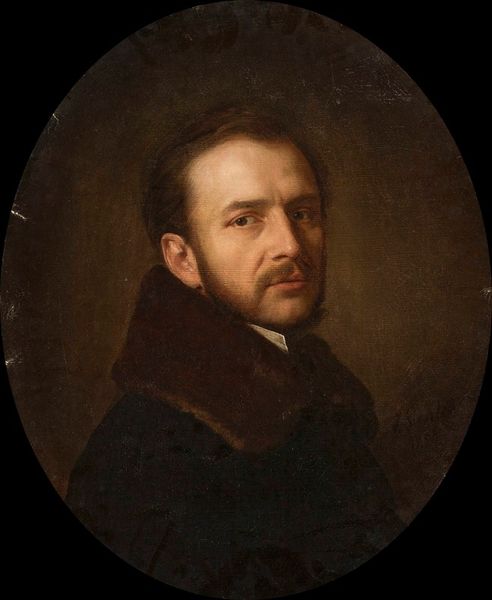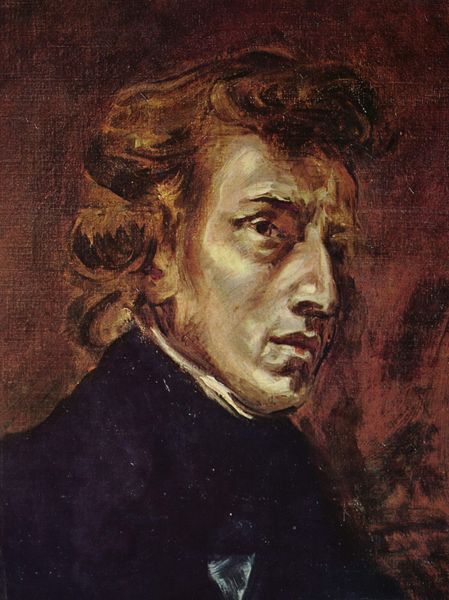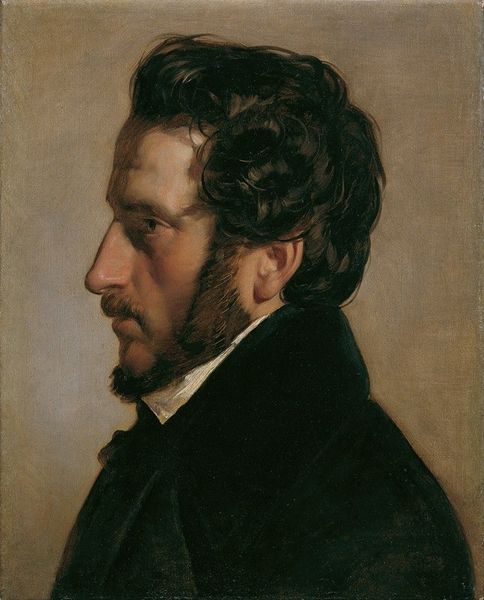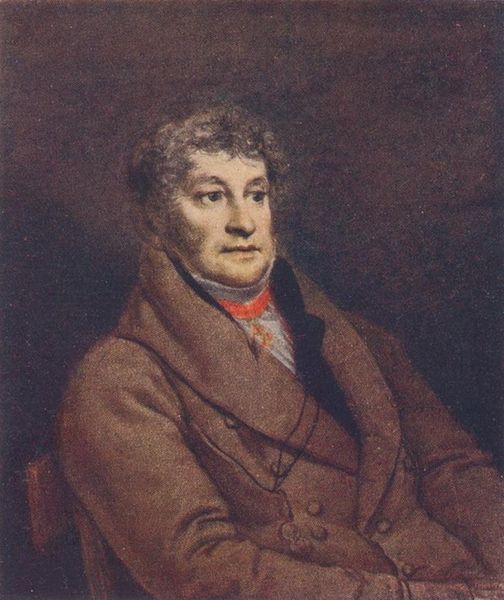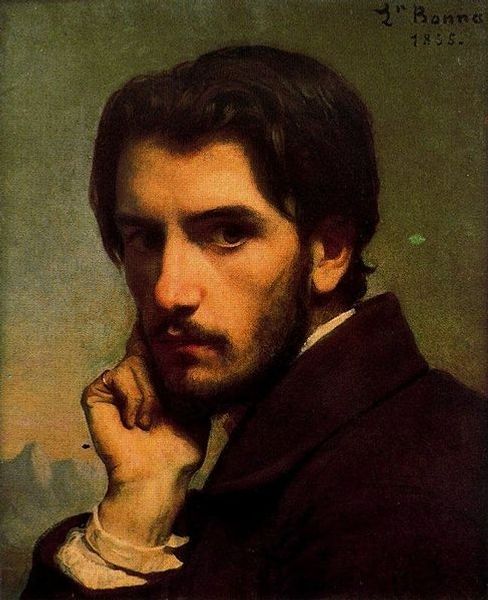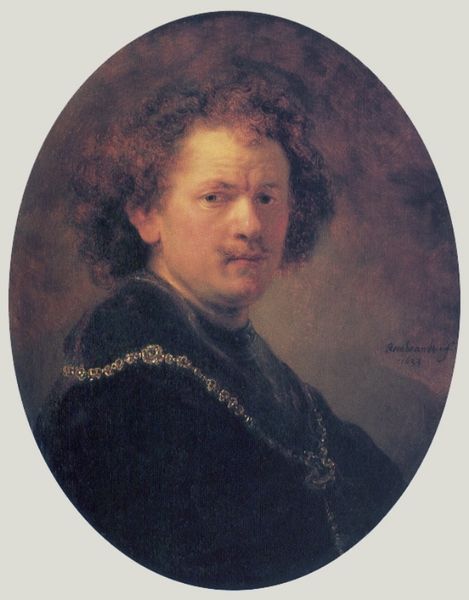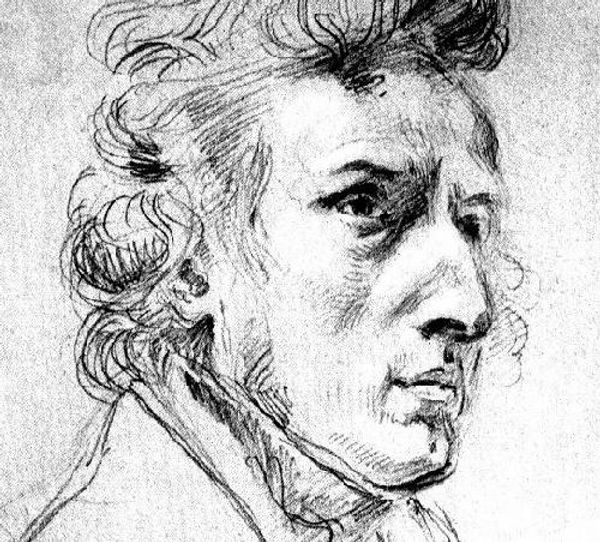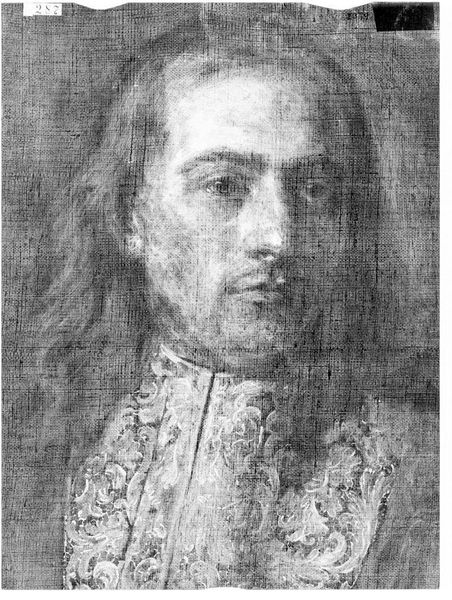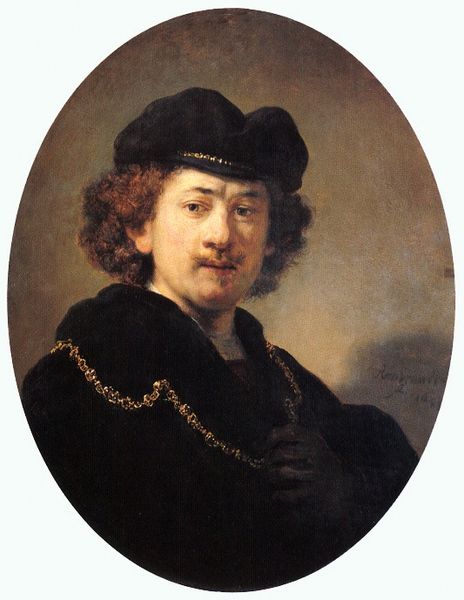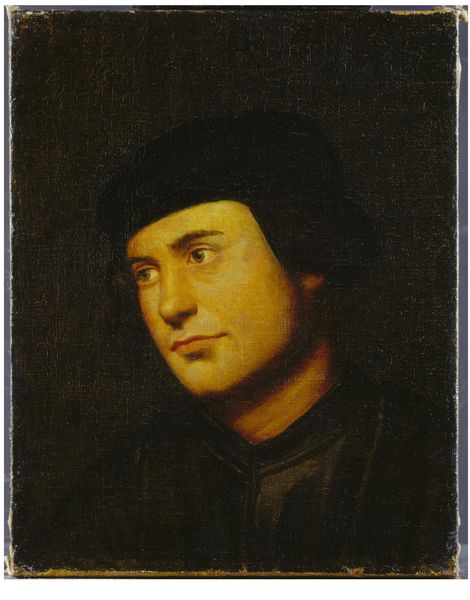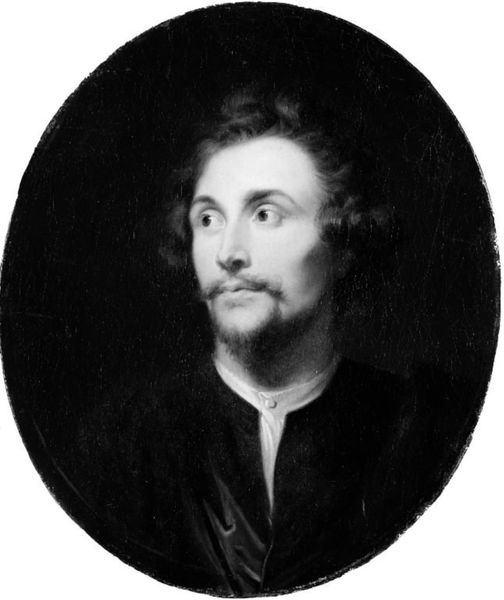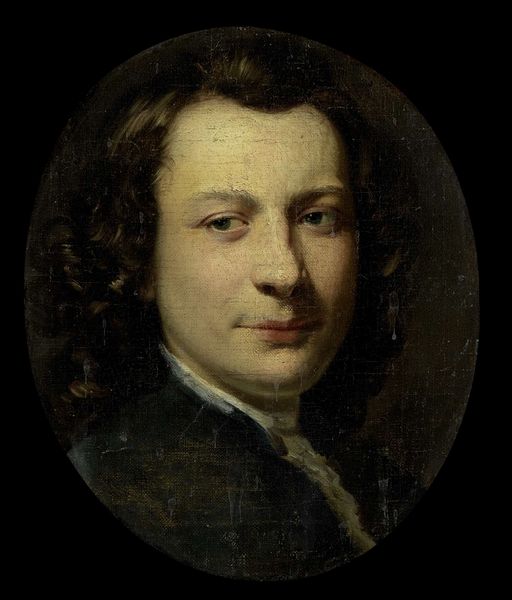
#
portrait
#
possibly oil pastel
#
oil painting
#
portrait reference
#
male-portraits
#
acrylic on canvas
#
portrait head and shoulder
#
underpainting
#
animal portrait
#
animal drawing portrait
#
portrait art
#
fine art portrait
Copyright: Public domain
Editor: Here we have Konstantin Egorovich Makovsky's "Portrait of Artist K.Bornikov," created around 1868. I'm struck by the subject's gaze; it's intense, almost challenging. And the oval format lends it a certain intimacy. How do you interpret this portrait? Curator: Note how the artist employs chiaroscuro. Observe the stark contrast between the illuminated face and the shadowed clothing, a technique intensifying the gaze you mentioned. This contrast serves to compartmentalize the figure. Makovsky is drawing attention to what? Editor: The face, definitely! And the artist uses soft, blurred edges everywhere except for the eyes. Is it all about highlighting inner qualities through his stare? Curator: Precisely! And consider the brushwork. Loose, almost impressionistic. Is this to portray emotion, feeling? There are also limited colors in the composition which makes it timeless, don't you think? The muted palette emphasizes the textures and tonal gradations rather than bold color statements. Editor: I see what you mean! It's almost monochromatic, pushing our focus to form and light. It almost makes it modern even though its almost 200 years old! Curator: Quite right. And note the pose – a slight turn of the head. Dynamic, not static. The tension created by this positioning enhances the portrait’s expressive power. A brilliant play on composition, texture and light. It invites continued scrutiny of its semiotic codes. Editor: I hadn’t really considered that sense of movement before. Analyzing those components really reveals layers I missed initially. Curator: And that, precisely, is the value of formal analysis! By understanding each element and its relationship to the whole, we begin to appreciate the intricate intentions behind the artwork.
Comments
No comments
Be the first to comment and join the conversation on the ultimate creative platform.
